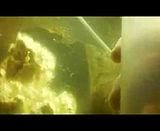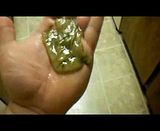I am having a problem with a dino plague in 55 gallon tank where my only filtration is the scrubber. It seems like the only usable advice for getting rid of the crap includes lights out and increased filtration (protien skimmer etc) but what do you do when the lights ARE your filtration?
Here is what I am fighting:
I tried everything I could think of (increased PH via kalk, manual removal, H2O2 treatment, lights out for a week) but nothing kills this shit. Suggestions?





 Reply With Quote
Reply With Quote
